Top Summer Destinations in the United States

The United States, with its vast and diverse landscapes, offers a variety of exciting destinations for summer travelers. From sun-soaked beaches and vibrant cities to stunning national parks and charming small towns, there’s something for everyone. As summer approaches, it’s time to plan your escape and discover the best places to visit in the United States.
Yellowstone National Park
Yellowstone National Park, established on March 1, 1872, holds the distinguished honor of being the first national park in the world. As we celebrate its enduring legacy on its 1-year anniversary, it is essential to reflect on the park’s rich history, breathtaking landscapes, and its vital role in conservation efforts.
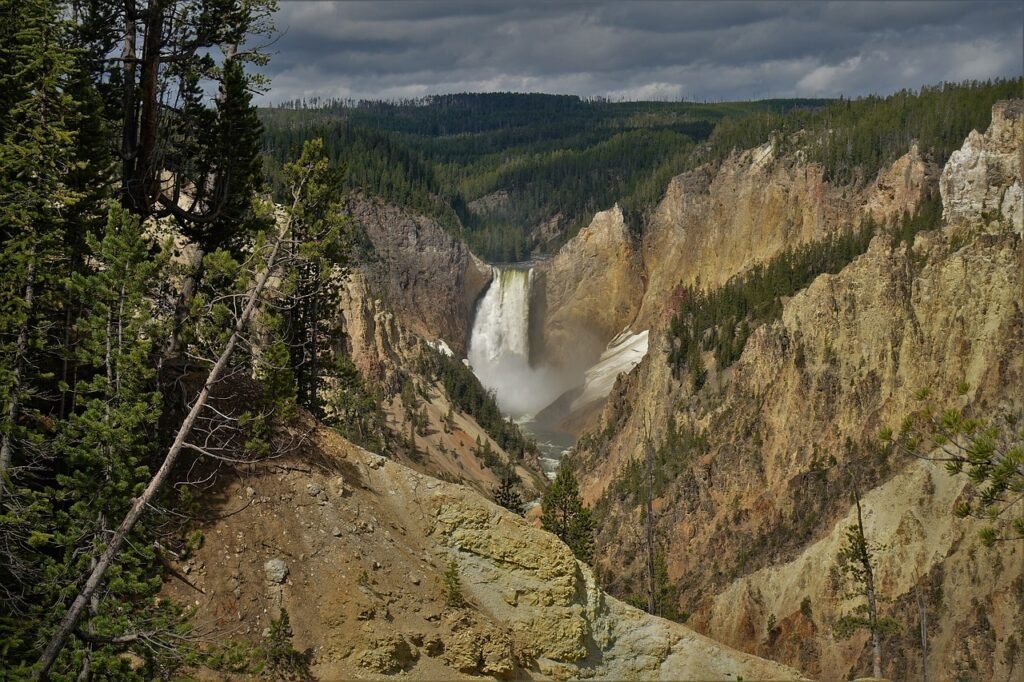
Geographical Marvels:
Located primarily within the U.S. states of Wyoming, Montana, and Idaho, Yellowstone spans over 2.2 million acres of pristine wilderness. The park is renowned for its geothermal wonders, including the iconic Old Faithful geyser, which shoots hot water and steam into the air at regular intervals, captivating visitors with its predictable eruptions.
Yellowstone is home to the Yellowstone Caldera, one of the largest active volcanic systems in the world. The park’s geothermal features, such as hot springs and mud pots, showcase the dynamic forces shaping the Earth beneath its surface. The vibrant colors of Grand Prismatic Spring and the otherworldly landscapes of Norris Geyser Basin further contribute to Yellowstone’s geological allure.
Wildlife Sanctuary:
Beyond its geothermal wonders, Yellowstone is a haven for diverse wildlife. The park is home to the “Big Five” – grizzly bears, wolves, bison, elk, and the elusive mountain lion. These majestic creatures roam freely within the park, offering visitors a unique opportunity to witness them in their natural habitat.
Yellowstone’s commitment to wildlife conservation is evident in the successful reintroduction of gray wolves in the 1990s, a move that has positively impacted the park’s ecosystem. The delicate balance between predator and prey in Yellowstone serves as a model for other conservation initiatives worldwide.
Scenic Beauty:
The landscapes of Yellowstone are nothing short of spectacular. Towering mountains, pristine lakes, and meandering rivers provide a backdrop to the park’s diverse ecosystems. The Yellowstone River, the longest undammed river in the contiguous United States, winds its way through the park, creating the breathtaking Yellowstone Grand Canyon.
Visitors can explore over 900 miles of hiking trails, providing access to some of the park’s most iconic sites, including the Grand Canyon, Yellowstone Lake, and Hayden Valley. The park’s commitment to sustainable tourism ensures that future generations can continue to marvel at its natural wonders.
Conservation Challenges:
While celebrating the success of Yellowstone’s conservation efforts, it is essential to acknowledge the challenges the park faces. Climate change, habitat loss, and invasive species pose ongoing threats to the delicate balance of its ecosystems. Continued efforts to address these challenges are crucial for the long-term sustainability of this natural treasure.
Grand Canyon, Arizona
Grand Canyon National Park, established on February 26, 1919, holds a special place in the hearts of nature enthusiasts around the world. As we mark its 1-year anniversary, it’s a fitting occasion to delve into the grandeur of this natural wonder, exploring its geological marvels, cultural significance, and ongoing commitment to preservation.
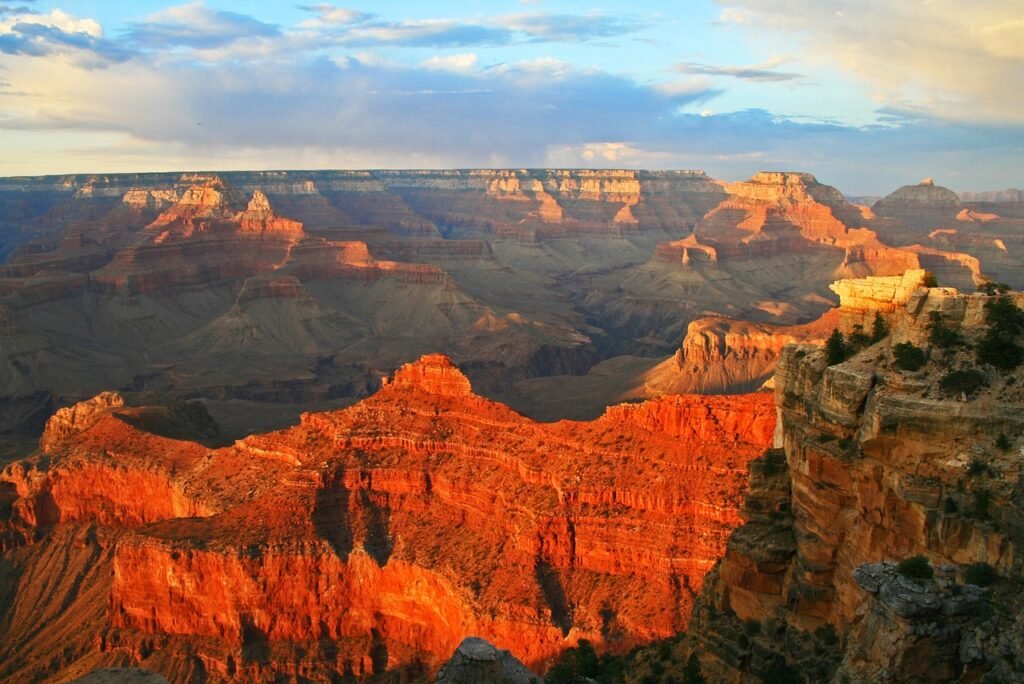
Geological Marvels:
Carved by the mighty Colorado River over millions of years, the Grand Canyon is a testament to the relentless forces of nature. This vast chasm spans approximately 277 miles in length, reaching depths of over a mile in some places. The canyon exposes nearly two billion years of Earth’s geological history, with its colorful layers revealing the story of ancient seas, uplifted plateaus, and eroding landscapes.
The South Rim and North Rim, the two primary access points for visitors, offer panoramic views that showcase the intricate tapestry of rock formations. Grand Canyon’s iconic vistas, including Mather Point and Yavapai Point, provide visitors with awe-inspiring glimpses into the vastness of time and the power of natural forces.
Cultural Significance:
Beyond its geological significance, the Grand Canyon holds immense cultural importance for numerous Native American tribes, including the Havasupai, Hopi, Navajo, and Hualapai. The canyon’s towering cliffs, sacred sites, and the Colorado River itself are integral components of their cultural heritage. Many tribes consider the Grand Canyon a sacred place, woven into their creation stories and spiritual traditions.
Visitors to the park can engage with the rich cultural history through interpretive programs, museums, and interactions with tribal communities. This aspect of the Grand Canyon adds layers of meaning to the breathtaking landscapes, fostering a deeper appreciation for the interconnectedness of nature and culture.
Outdoor Adventures:
Grand Canyon National Park provides a haven for outdoor enthusiasts, offering a wide array of recreational activities. Hiking trails, such as the iconic Bright Angel Trail and Rim-to-Rim Trail, provide opportunities to explore the canyon’s depths and witness its changing landscapes. Rafting along the Colorado River offers a unique perspective, allowing visitors to experience the canyon from the water.
Whether hiking, camping, or simply taking in the scenery, the Grand Canyon’s diverse ecosystems, from desert scrublands to pine forests, create an outdoor playground for nature lovers of all kinds.
Preservation Challenges:
While celebrating the Grand Canyon’s beauty, it is essential to recognize the challenges it faces. Increased visitation, climate change, and the potential for resource exploitation pose ongoing threats to the delicate balance of this natural wonder. The National Park Service and various conservation organizations continue to work tirelessly to protect the Grand Canyon’s unique ecosystems for future generations.
New York City, New York
New York City, the city that never sleeps, has been a beacon of innovation, culture, and diversity since its founding. As we commemorate its 1-year anniversary, it’s an opportune moment to explore the dynamic tapestry of this metropolis, delving into its iconic landmarks, cultural vibrancy, and the ongoing narrative of resilience and growth.
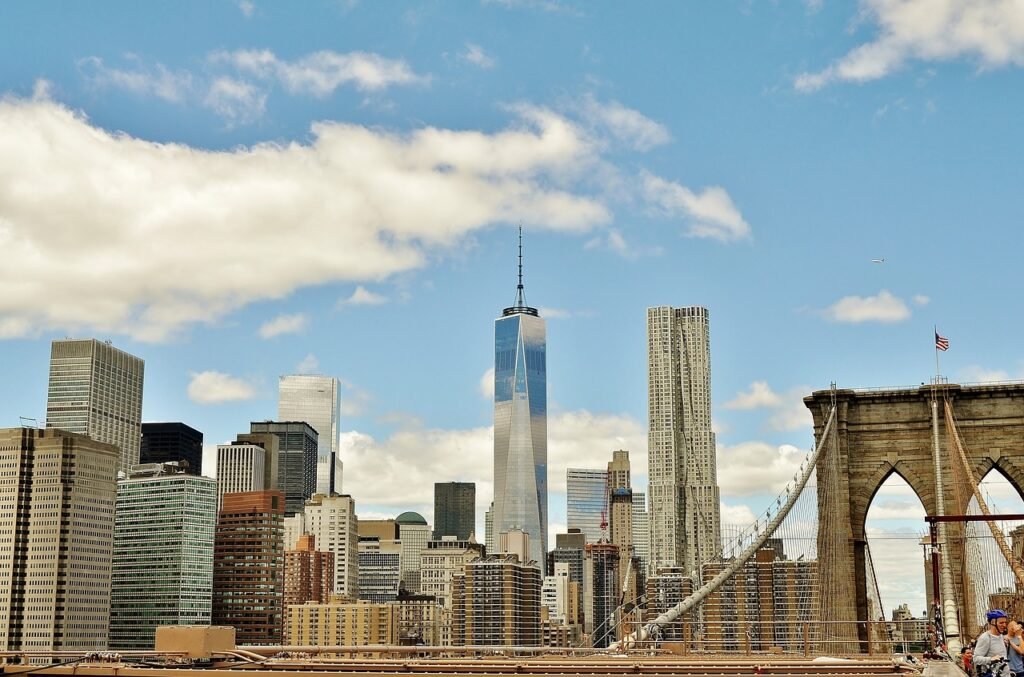
Iconic Landmarks:
New York City’s skyline is adorned with iconic landmarks that have become symbols of the city itself. The Statue of Liberty, standing proudly in New York Harbor, welcomes visitors with open arms, symbolizing freedom and opportunity. The Empire State Building, once the tallest building in the world, continues to dominate the skyline, offering breathtaking views of the city from its observation deck.
Central Park, a sprawling oasis in the heart of Manhattan, provides a serene contrast to the bustling urban landscape. Its meandering pathways, lush greenery, and recreational facilities offer a respite for both residents and visitors alike.
Cultural Vibrancy:
New York City is a cultural melting pot, home to a myriad of neighborhoods, each with its own unique character and charm. From the vibrant arts scene in Chelsea and the historic architecture of Harlem to the trendsetting boutiques of SoHo, the city is a canvas of diversity and creativity.
Broadway, synonymous with world-class theater productions, draws in audiences from around the globe. Museums such as the Metropolitan Museum of Art and the Museum of Modern Art showcase an unparalleled collection of artistic treasures, reflecting the city’s commitment to the arts and culture.
The Energy of Times Square:
Times Square, often referred to as “The Crossroads of the World,” pulsates with energy day and night. Neon billboards, theaters, and a constant flow of people encapsulate the vivacity of the city. As the ball drops on New Year’s Eve, millions around the world tune in to witness the celebration that has become synonymous with the arrival of a new year.
Resilience and Growth:
New York City has weathered its share of challenges, from economic downturns to the tragedy of September 11, 2001. The city’s resilience and ability to adapt have been key to its enduring success. The revitalization of Lower Manhattan, the High Line’s transformation from abandoned railway tracks to an urban park, and ongoing infrastructure projects demonstrate the city’s commitment to growth and renewal.
San Francisco, California
San Francisco, a city known for its iconic landmarks, cultural diversity, and innovative spirit, celebrates its 1-year anniversary as a beacon of the West Coast. As we reflect on this milestone, it’s an ideal opportunity to explore the unique charm of the City by the Bay, its architectural wonders, cultural richness, and ongoing commitment to progressive ideals.
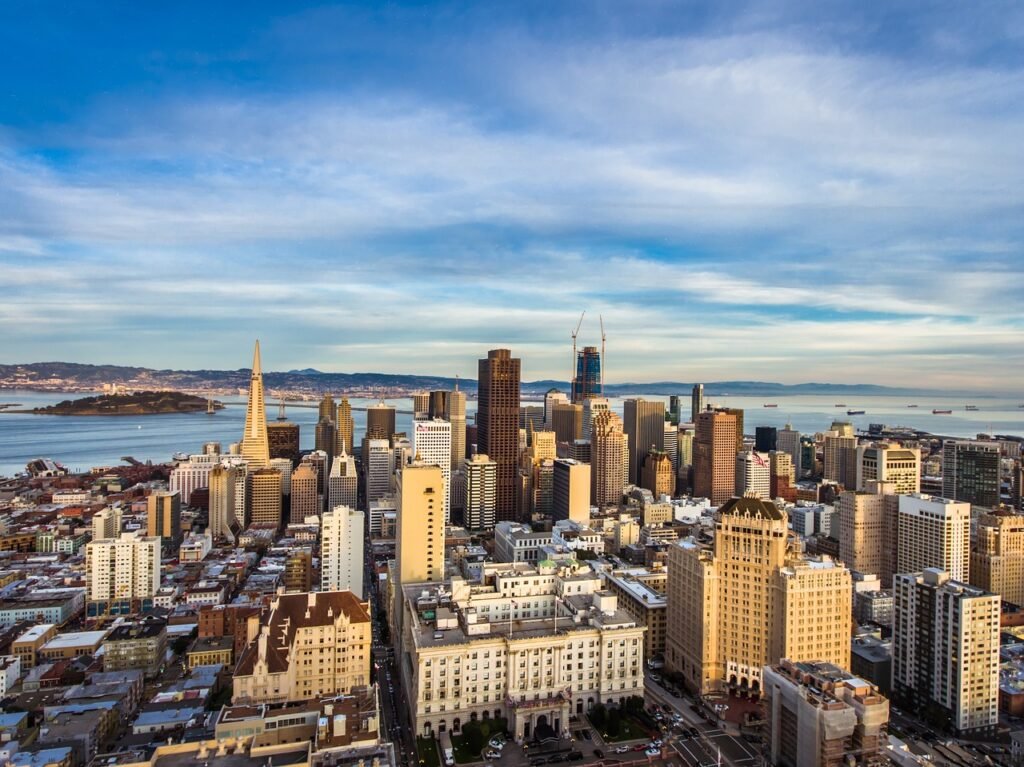
Architectural Wonders:
San Francisco’s skyline is adorned with architectural marvels that blend the historic with the modern. The Golden Gate Bridge, an internationally recognized symbol, spans the entrance to San Francisco Bay, offering breathtaking views of the city and the Pacific Ocean. Alcatraz Island, with its infamous former prison, stands as a testament to the city’s layered history.
Victorian and Edwardian houses, famously known as “Painted Ladies,” grace the city’s neighborhoods, adding a touch of charm to the hilly landscape. The contrasting architecture of the Transamerica Pyramid and Salesforce Tower reflects the city’s embrace of innovation and modernity.
Cultural Richness:
San Francisco’s cultural landscape is as diverse as its population. The city’s neighborhoods, from the historic Chinatown to the bohemian enclave of Haight-Ashbury, offer a mosaic of experiences. The Mission District, with its vibrant street art and Latinx influences, stands out as a testament to the city’s cultural richness.
The city’s commitment to the arts is evident in institutions such as the San Francisco Museum of Modern Art (SFMOMA) and the Asian Art Museum. The annual San Francisco International Film Festival and the vibrant theater scene contribute to the city’s reputation as a cultural hub.
Innovation and Technology:
San Francisco is synonymous with technological innovation, serving as the epicenter of Silicon Valley’s tech revolution. The city’s proximity to major tech companies and startups has fueled a culture of creativity and entrepreneurship. The Salesforce Park and Transbay Transit Center exemplify the city’s commitment to sustainable and forward-thinking urban development.
The Diverse Culinary Scene:
San Francisco’s culinary scene reflects the city’s diverse population and commitment to fresh, locally sourced ingredients. From Chinatown’s delectable dim sum to the seafood delights at Fisherman’s Wharf, the city offers a gastronomic journey that mirrors its cultural tapestry.
Natural Beauty and Outdoor Recreation:
The city’s natural beauty extends beyond its iconic landmarks. Twin Peaks, offering panoramic views of the city, and Lands End, with its coastal trails, provide residents and visitors with opportunities to connect with nature. The Presidio, a former military base turned national park, combines history with green spaces, providing a retreat within the city limits.
Charleston, South Carolina
Charleston, South Carolina, a city steeped in history, charm, and Southern hospitality, celebrates its 1-year anniversary as a cultural gem of the Southeast. As we reflect on this milestone, let’s explore the allure of Charleston, from its historic architecture and cobblestone streets to its culinary delights and warm sense of community.
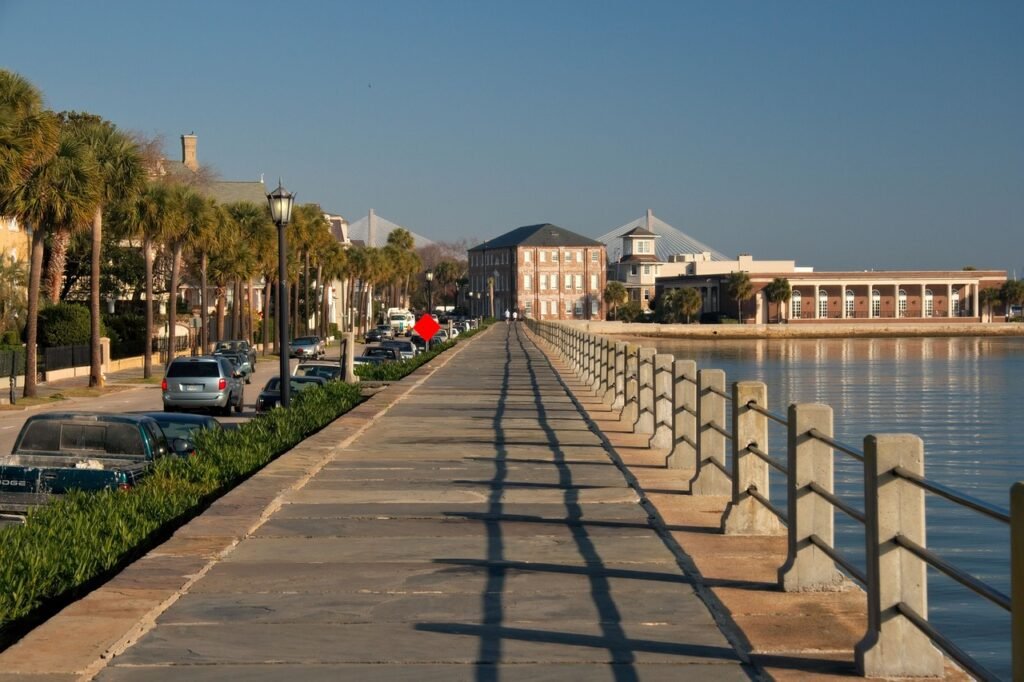
Historic Architecture and Cobblestone Streets:
Charleston’s historic district is a treasure trove of well-preserved architecture, with antebellum mansions, charming row houses, and centuries-old churches lining its cobblestone streets. The Battery promenade, adorned with grand mansions and ancient live oak trees draped in Spanish moss, offers a picturesque view of Charleston Harbor.
Rainbow Row, a series of pastel-colored Georgian row houses, stands as one of the city’s most iconic landmarks, showcasing the architectural diversity that defines Charleston. The historic charm of the French Quarter and the character-filled streets of Ansonborough contribute to the city’s timeless appeal.
Culinary Delights and Lowcountry Cuisine:
Charleston has earned a reputation as a culinary destination, with its vibrant food scene rooted in Lowcountry cuisine. From shrimp and grits to she-crab soup, the city’s restaurants celebrate the rich flavors of the region. The bustling Charleston City Market, dating back to the 18th century, offers a taste of local produce, handmade crafts, and Gullah sweetgrass baskets.
The city’s dining establishments, ranging from casual eateries to fine-dining establishments, contribute to Charleston’s status as a gastronomic haven. The unique blend of traditional Southern flavors and innovative culinary techniques has solidified the city’s place on the culinary map.
Rich Cultural Heritage:
Charleston’s cultural heritage is deeply intertwined with its history, from its role in the Civil War to its significance in African American history. The Avery Research Center for African American History and Culture, the Old Slave Mart Museum, and the Emanuel African Methodist Episcopal Church stand as testaments to the city’s complex past.
Annual events like the Spoleto Festival USA, a world-renowned performing arts festival, showcase Charleston’s commitment to the arts and cultural enrichment. The Preservation Society of Charleston actively works to protect and maintain the city’s historic buildings, ensuring that future generations can appreciate its architectural and cultural legacy.
Warm Sense of Community:
Charleston’s warm sense of community is evident in its friendly residents, vibrant neighborhoods, and numerous festivals that bring people together. Waterfront Park, with its iconic Pineapple Fountain, provides a scenic backdrop for community gatherings and leisurely strolls.
Local events like the Charleston Wine + Food Festival and the Charleston Tea Garden bring residents and visitors alike together to celebrate the city’s culinary and cultural offerings. The sense of community extends to the Gullah/Geechee Cultural Heritage Corridor, preserving the unique culture and language of the Gullah people.
Maui, Hawaii
Maui, the second-largest island in the Hawaiian archipelago, is a tropical paradise that celebrates its 1-year anniversary as a haven of natural beauty, cultural richness, and laid-back island living. As we reflect on this milestone, let’s explore the enchanting landscapes, vibrant traditions, and the spirit of aloha that define the magic of Maui.

Breathtaking Landscapes:
Maui’s landscapes are a symphony of natural wonders, from lush rainforests and cascading waterfalls to golden beaches and volcanic craters. Haleakalā National Park, home to the dormant Haleakalā volcano, offers sunrise vistas that are nothing short of celestial, while the lush Hana Highway takes visitors on a scenic journey through bamboo forests, waterfalls, and coastal cliffs.
The Road to Hana, with its hairpin turns and panoramic views, provides a glimpse into Maui’s diverse ecosystems. Makena Beach, also known as Big Beach, and the pristine shores of Wailea offer sun-seekers pristine stretches of sand and turquoise waters.
Cultural Richness and Traditions:
Maui’s cultural heritage is deeply rooted in the traditions of the Native Hawaiian people. The Old Lahaina Luau and the Polynesian-influenced Feast at Lele showcase traditional hula, music, and cuisine, providing visitors with an immersive experience in Hawaiian culture.
The ‘Iao Valley, a sacred site for Native Hawaiians, is a lush valley surrounded by towering peaks. The ‘Iao Needle, a volcanic spire, is a cultural landmark that holds historical and spiritual significance. The annual Celebration of the Arts festival in Wailea emphasizes the preservation of Hawaiian arts and traditions.
Water Activities and Marine Life:
Maui’s surrounding waters are teeming with marine life, making it a paradise for water enthusiasts. Snorkeling at Molokini Crater, a partially submerged volcanic crater, offers an opportunity to explore vibrant coral reefs and encounter diverse marine species. Whale watching off the coast of Lahaina during the winter months provides a chance to witness humpback whales in their natural habitat.
Maui’s commitment to marine conservation is evident in efforts to protect coral reefs and the promotion of sustainable tourism practices. The Ahihi-Kina’u Natural Area Reserve and the Honolua Bay Marine Reserve are marine sanctuaries that contribute to the preservation of Maui’s coastal ecosystems.
Island Hospitality and Aloha Spirit:
Maui’s residents, known for their warmth and hospitality, embody the Aloha Spirit—a genuine expression of love, compassion, and harmony. The laid-back atmosphere of towns like Paia and Lahaina invites visitors to experience the relaxed pace of island life.
Local farmers’ markets, such as the Maui Swap Meet, showcase the island’s agricultural abundance, from fresh tropical fruits to handmade crafts. The blend of Hawaiian, Asian, and Polynesian influences is evident in the island’s cuisine, featuring dishes like poke bowls, loco moco, and Haupia pie.
Miami, Florida
Miami, the Magic City, celebrates its 1-year anniversary as a dynamic hub of culture, diversity, and tropical allure. As we reflect on this milestone, let’s explore the sun-kissed beaches, multicultural neighborhoods, and the electric energy that defines the essence of Miami.
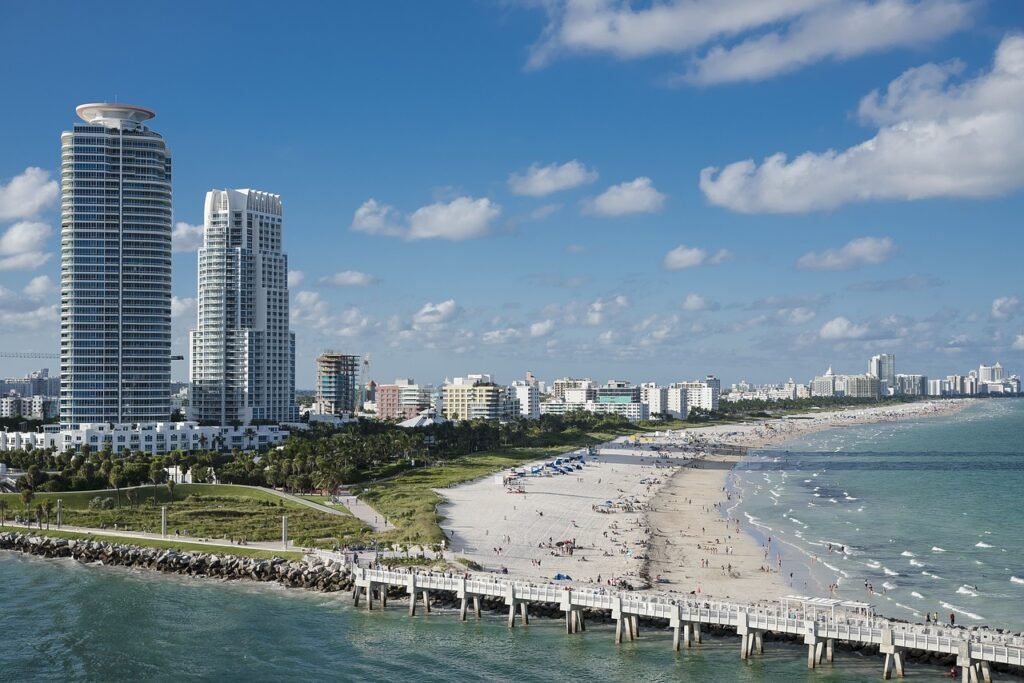
Sun-Kissed Beaches and Art Deco Splendor:
Miami’s coastline is a playground of sun-drenched beaches, each with its own unique character. South Beach, with its iconic pastel-hued Art Deco architecture, is a world-famous destination that combines vibrant energy with retro charm. Ocean Drive, lined with neon lights and sidewalk cafes, encapsulates the glamour and excitement of Miami’s beach culture.
Beyond the glamour of South Beach, visitors can explore the natural beauty of Crandon Park or enjoy the bohemian atmosphere of the historic Virginia Key Beach Park. The city’s commitment to preserving its coastal ecosystems is evident in initiatives like the Miami Beach Erosion Control and Sand Replenishment Project.
Cultural Melting Pot:
Miami’s diverse population contributes to its rich cultural tapestry. Little Havana, with its lively Calle Ocho, is a vibrant neighborhood that pulses with the rhythms of Cuban music, the aroma of cigars, and the flavors of authentic Latin cuisine. Wynwood, known for its colorful street art and galleries, has become a global destination for urban art enthusiasts.
The Pérez Art Museum Miami (PAMM) and the Wynwood Walls showcase the city’s commitment to the arts. The annual Art Basel Miami Beach, an international art fair, transforms the city into a global art hub, attracting artists, collectors, and enthusiasts from around the world.
Tropical Cuisine and Culinary Delights:
Miami’s culinary scene mirrors its cultural diversity, offering a fusion of flavors from around the world. From Cuban sandwiches in Little Havana to ceviche in Coconut Grove, the city is a gastronomic delight. The seafood markets of Miami Beach and the diverse array of food trucks add to the culinary adventure.
The city’s commitment to sustainable and locally sourced ingredients is evident in the farmers’ markets and the embrace of farm-to-table dining. Miami Spice, an annual dining promotion, allows locals and visitors to savor the city’s culinary offerings at special prices.
Global Gateway and Economic Hub:
Miami’s strategic location as a gateway to the Americas and its status as an economic hub have contributed to its international allure. The PortMiami, one of the largest cargo ports in the United States, is a vital hub for trade and cruise travel. The city’s international airport, Miami International Airport, connects it to destinations across the globe.
The booming real estate market and the rise of the Brickell financial district underscore Miami’s economic vitality. The city’s skyline, punctuated by iconic buildings like the Freedom Tower and the Pérez Art Museum, reflects its status as a global metropolis.
Asheville, North Carolina
Located in the heart of the Blue Ridge Mountains, Asheville, North Carolina, stands as a vibrant city that seamlessly weaves together a rich tapestry of culture, nature, and creativity. As we explore this eclectic destination, we discover a community that embraces diversity, celebrates the arts, and immerses itself in the breathtaking landscapes that surround it.

Nature’s Playground:
Surrounded by the awe-inspiring beauty of the Blue Ridge Mountains, Asheville offers a haven for nature enthusiasts. The iconic Blue Ridge Parkway, often referred to as “America’s Favorite Drive,” provides panoramic views, hiking trails, and opportunities to connect with the natural splendor of the region. Nearby attractions like Pisgah National Forest and Great Smoky Mountains National Park offer endless outdoor adventures, from cascading waterfalls to challenging hiking routes.
Artistic Expression:
Asheville has earned a reputation as a haven for artists and creatives. The River Arts District, once an industrial area, has transformed into a vibrant neighborhood filled with studios, galleries, and eclectic public art. Visitors can explore the studios of local artists, witness live demonstrations, and immerse themselves in the dynamic art scene.
Biltmore Estate:
An iconic symbol of Asheville’s opulence and grandeur, the Biltmore Estate stands as the largest privately-owned home in the United States. Built by George Washington Vanderbilt II in the late 19th century, the estate features a magnificent mansion, beautifully landscaped gardens, and a winery. Touring the Biltmore allows visitors to step back in time and witness the Gilded Age’s architectural splendor.
Culinary Delights:
Asheville’s culinary scene is a diverse and dynamic fusion of flavors. From farm-to-table dining experiences to quirky food trucks, the city caters to all tastes. The local focus on sustainability and fresh, seasonal ingredients has garnered Asheville recognition as a foodie destination. The Asheville Independent Restaurant Association (AIR) plays a pivotal role in promoting local eateries, ensuring a diverse array of culinary offerings.
Craft Beer Capital:
Asheville proudly holds the title of “Beer City, USA,” and for a good reason. The city boasts a thriving craft beer scene with numerous breweries dotting its landscape. The South Slope District is particularly famous for its concentration of craft breweries, each offering a unique blend of flavors and atmospheres. The Asheville Beer Week and the Brewgrass Festival draw beer enthusiasts from near and far to celebrate the craft beer culture.
Spirit of Community:
Asheville exudes a welcoming and inclusive spirit that embraces diversity and encourages community engagement. Local events and festivals, such as the LEAF Festival and the Mountain Dance and Folk Festival, showcase the city’s commitment to preserving its cultural heritage. The sense of community is also evident in initiatives supporting local businesses, sustainable practices, and social justice causes.
Lake Tahoe, California/Nevada
Lake Tahoe stands as an Alpine gem, captivating visitors with its crystal-clear waters, towering peaks, and a unique blend of outdoor adventures. As we explore this pristine destination, we uncover a haven for nature lovers, thrill-seekers, and those seeking the serenity of mountain landscapes.

Breathtaking Scenery:
Lake Tahoe’s claim to fame is undoubtedly its breathtaking scenery. Straddling the border between California and Nevada, the lake is renowned for its crystal-clear, azure waters, surrounded by towering snow-capped peaks. The panorama is nothing short of spectacular, offering postcard-worthy views from various vantage points along the shoreline.
Outdoor Adventure Playground:
Lake Tahoe caters to outdoor enthusiasts year-round. In the winter, the region transforms into a snow-covered wonderland, attracting skiers and snowboarders to its world-class ski resorts, including Heavenly, Squaw Valley, and Northstar. Come summertime, the lake becomes a playground for water activities, hiking, mountain biking, and zip-lining, providing an abundance of options for thrill-seekers and nature lovers alike.
Emerald Bay State Park:
One of Lake Tahoe’s crown jewels, Emerald Bay State Park, is a must-visit destination. Home to the iconic Emerald Bay, this park features the stunning Vikingsholm Castle, a Scandinavian-style mansion nestled on the shores of the lake. The park offers hiking trails with panoramic views and opportunities to explore Fannette Island, the only island in Lake Tahoe.
Tahoe Rim Trail:
For those seeking a deeper connection with nature, the Tahoe Rim Trail provides an immersive experience. This 165-mile-long trail circumnavigates Lake Tahoe, offering hikers and backpackers breathtaking views, alpine meadows, and diverse ecosystems. Sections of the trail cater to various skill levels, making it accessible for day hikers or those embarking on a more extended adventure.
Serenity in South Lake Tahoe:
South Lake Tahoe, with its vibrant atmosphere and diverse offerings, serves as the primary hub for visitors. The city boasts a lively entertainment scene, a variety of dining options, and a range of accommodations. The South Shore also provides access to Heavenly Mountain Resort, ensuring a seamless transition from mountain adventures to city comforts.
Culinary Delights and Nightlife:
Lake Tahoe’s culinary scene reflects a fusion of mountain town charm and diverse flavors. From upscale dining with lake views to cozy cafes and brewpubs, the region offers a diverse range of dining experiences. In the evening, the nightlife comes alive with live music, casinos on the Nevada side, and laid-back bars, creating a perfect ambiance for unwinding after a day of exploration.
Environmental Conservation:
Lake Tahoe’s stunning beauty has prompted a commitment to environmental conservation. Organizations like the League to Save Lake Tahoe work tirelessly to protect the lake’s clarity, preserve its shoreline, and promote sustainable practices. This dedication ensures that future generations can continue to enjoy the pristine nature of this Alpine paradise.
Nashville, Tennessee
Nashville, often referred to as “Music City,” stands as the vibrant and soulful heartbeat of Tennessee, offering a harmonious blend of musical history, cultural richness, and Southern charm. This lively destination has earned its place on the global stage, drawing visitors with its iconic music scene, diverse neighborhoods, and a warm embrace of creativity. Join us as we explore the multifaceted tapestry that makes Nashville a must-visit city for music enthusiasts, history buffs, and those seeking a taste of genuine Southern hospitality.
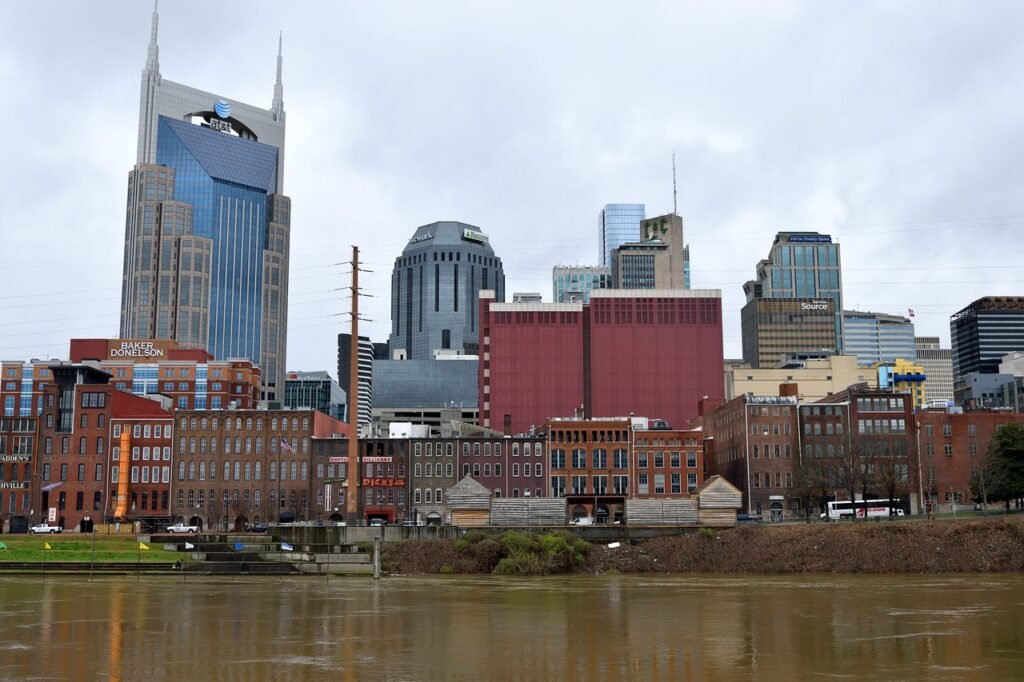
Musical Legacy:
Nashville’s moniker as “Music City” is not just a title; it’s a testament to the city’s deep-rooted musical legacy. The famed Grand Ole Opry, the longest-running live radio show in the world, has been showcasing country music legends since 1925. Visitors can bask in the rich history of this iconic venue or explore the Country Music Hall of Fame, a treasure trove of memorabilia and exhibits celebrating the genre’s luminaries.
Broadway Honky-Tonks:
Nashville’s vibrant nightlife comes alive on Lower Broadway, where neon lights, live music, and the infectious energy of honky-tonks create an unforgettable atmosphere. Iconic establishments like Tootsie’s Orchid Lounge and The Stage on Broadway host talented musicians, offering visitors an authentic taste of Nashville’s live music scene. The honky-tonks along Broadway ensure that every night is a celebration of music and camaraderie.
Historic Neighborhoods:
Beyond the musical epicenter, Nashville’s neighborhoods showcase a blend of history and contemporary charm. The Gulch, known for its trendy boutiques and upscale dining, contrasts with the historic architecture and cobblestone streets of Germantown. Each neighborhood, from the hipster haven of East Nashville to the sophisticated appeal of 12 South, contributes to the city’s dynamic personality.
Ryman Auditorium:
The Ryman Auditorium, affectionately known as the “Mother Church of Country Music,” is an architectural and cultural gem. Built in 1892 as a tabernacle, the Ryman has hosted legendary performances from musicians spanning various genres. Today, it continues to be a revered venue, offering guided tours that provide insight into its storied past.
Culinary Delights:
Nashville’s culinary scene is a melting pot of flavors, offering a delightful fusion of Southern comfort food, international cuisine, and innovative culinary creations. Hot chicken, a Nashville specialty known for its spicy kick, has become a local legend. Food enthusiasts can explore the city’s diverse eateries, from classic meat-and-three establishments to trendy farm-to-table restaurants.
Parks and Green Spaces:
Nashville takes pride in its green spaces, providing residents and visitors with places to relax and rejuvenate. Centennial Park, home to the iconic Parthenon replica, offers walking trails and serene gardens. The Shelby Bottoms Greenway and Nature Park provides a more rustic escape, with biking trails and scenic river views.
Warm Southern Hospitality:
Perhaps one of Nashville’s most cherished attributes is its warm Southern hospitality. From the welcoming smiles of locals to the genuine friendliness encountered in shops and eateries, Nashville embraces visitors with open arms. The city’s inviting spirit creates an atmosphere where every guest feels like an honorary Nashvillian.






